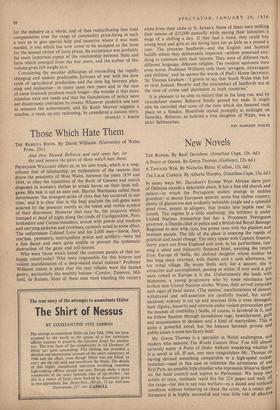The Land
THE history of agriculture in Britain during the 1939-45 war should be, without question, a success story. That is the thought which heads Sir Keith Murray's concluding chapter in the last- published volume of the History of the Second World War. Sir Keith Murray is rightly conscious that he is writing official history `for the record.' Much of the volume is therefore, of necessity, a record of essential items from 'a multitude of departmental files' and the records of County War Agricultural Committees. It would require an exceptional magic to extract from such dusty archives a dramatic picture of the truly remarkable achievement of British farming during the Second World War. But the author, while resisting any temptation to wave the wand, says enough to indicate that this achievement was all the more remarkable for being accomplished in violation, not only of dearly held urban notions about the sanctity of 'cheap food' but also of many traditional rural ideas of good husbandry.
To the student of agriculture the fourth chapter, dealing with measures to implement the programme in the first year of the war, will be of especial value, for it was this year which saw a departure from the old technique of price-fixing based on a com- putation of production costs commodity by commodity, and the acceptance—not without some struggle—of a new approach. The method of using a global figure to assess the increase in total production costs and as a guide to the compensation necessary for the industry as a whole, and of then redistributing that total compensation over the range of commodity price-fixing in such a way as to give special help and incentive where it was most needed, is one which has now come to be accepted as the basis for the annual review of farm prices. Its acceptance was probably the most important aspect of the relationship between State and farm which emerged from the war years, and the author of this volume gives full weight to it.
Considering the peculiar difficulties of reconciling the rapidly changing and seldom predictable fortunes of war with the slow cycle of agricultural production and the time lag between plan- ning and realisation—in many cases two years and in the case of some livestock products much longer—the wonder is that more mistakes were not made and that the foundations of policy were not disastrously overtaken by events. Whatever yardstick one uses to measure the achievement, and Sir Keith Murray suggests a number, It must, on any reckoning, be considered a success story.
STANLEY J. BAKER



































 Previous page
Previous page